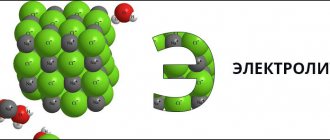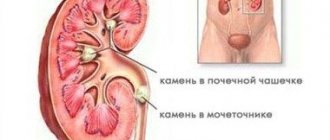1.General information
Potassium is one of the key macroelements in the human body. This substance, especially in interaction with sodium, is necessary for the regulation of contractile activity of muscles (including the myocardium), water-salt, acid-base and energy balance, higher nervous activity, normal fermentation and metabolism, secretory activity of the endocrine glands, functioning liver and kidneys. Up to half of all salts in the body are potassium compounds, and most of them are contained in intracellular liquid spaces.
For all micro- and macroelements, including potassium, a certain concentration range must be observed.
Otherwise, both deficiency and excess lead to the development of severe, sometimes life-threatening conditions. Hyperkalemia, i.e. Excessive potassium levels are a typical example.
A must read! Help with treatment and hospitalization!
Nutrition for patients receiving dialysis treatment
The article provides general principles of nutrition for patients with end-stage renal failure receiving treatment with hemodialysis or peritoneal dialysis. It is emphasized that not only the health, but also the life of patients on dialysis depends on diet. Recommendations are given on caloric intake, consumption of fats, proteins, carbohydrates, fluids, electrolytes and microelements.
Table 1. Dietary recommendations for adults receiving hemodialysis treatment
Table 2. Causes of protein-energy malnutrition in patients receiving dialysis treatment
Table 3. Possible factors influencing the risk of death in protein-energy malnutrition*
Table 4. Criteria for protein-energy malnutrition in kidney pathology (developed by the European Society for Clinical Nutrition and Metabolism)
Table 5. Additives used in the food industry (food products) containing phosphorus*
Table 6. Phosphorus content in products, ranked according to the ratio of phosphorus to protein
Dieting in dialysis patients has several important goals. These include maintaining good nutritional status of the patient, preventing and slowing the development of cardiovascular, cerebrovascular and peripheral vascular diseases, preventing the development of mineral-bone disorders, as well as preventing and correcting metabolic disorders resulting from uremic intoxication and inadequate dialysis. Thus, all patients receiving dialysis treatment must adhere to a certain diet, since not only their health, but also their lives depend on adherence to nutritional principles. Basic dietary recommendations are given in Table 1.
Protein-energy malnutrition
One of the most important problems that arises in dialysis patients with poor nutrition is protein-energy malnutrition [1]. In patients receiving hemodialysis, nutritional status disorders occur in 10–70% of cases. Thus, in Russia, before dialysis in 43.4% of patients, the serum albumin concentration is
The causes of protein-energy malnutrition in patients receiving dialysis treatment are shown in Table 2. A decrease in body mass index, cholesterol levels, albumin, prealbumin, and other indicators of protein-energy malnutrition is associated with an increased risk of morbidity and death [3–5]. The increased risk of death with protein-energy malnutrition may be due to various factors (Table 3) [6].
Diagnosis of protein-energy malnutrition includes analysis of anamnesis (changes in the patient’s body weight), physical examination, anthropometry, determination of body composition (most often bioimpedance spectroscopy is used for this), laboratory and functional indicators (Table 4). Only a few randomized studies with very small numbers of participants have examined the amount of protein that dialysis patients should receive per day [7, 8]. On the one hand, it was found that with a protein intake of 1.1–1.2 g/kg/day, patients maintained a neutral or positive nitrogen balance and increased albumin levels. On the other hand, it was noted that protein intake of 1.2 g/kg/day does not induce uremic intoxication [9].
Calorie needs
In a study by L. Slomowitz et al. [10] it was convincingly shown that neutral energy balance in patients is achieved with a consumption of 35 kcal/kg/day. In older people (over 60 years of age), a lower calorie intake is allowed (30–35 kcal/kg/day).
Fat requirement
Dyslipidemia occurs more frequently in dialysis patients than in the general population [11]. In addition, patients on hemodialysis are characterized by hypertriglyceridemia and low levels of high-density lipoprotein cholesterol. Very low-density lipoprotein cholesterol levels are usually elevated in such patients, while low-density lipoprotein cholesterol and total cholesterol are usually normal. In patients receiving peritoneal dialysis treatment, dyslipidemia is more pronounced than in patients on hemodialysis. One of the reasons for these changes is hyperinsulinemia, which develops in response to glucose absorption, which leads to increased synthesis and secretion of very low-density lipoproteins. Intense loss of protein stimulates the synthesis of albumin and lipoproteins. In this regard, the need to prescribe statins to patients with dyslipidemia on peritoneal dialysis is obvious. The use of solutions with icodextrin is associated with a 5% decrease in total cholesterol concentrations. In patients receiving hemodialysis, the same principles for treating dyslipidemia can be used as in the general population.
Fluid and sodium requirements
Dialysis patients, especially those with no residual renal function, should avoid consuming large amounts of sodium chloride. Excessive salt consumption can lead to increased body weight in the interdialysis period (in patients on hemodialysis), arterial hypertension, edema, myocardial hypertrophy, and heart failure.
For hemodialysis patients, it is recommended to limit sodium chloride intake to 2.5–3.8 g/day (1–1.5 g sodium). You should pay attention to the fact that the largest amount of salt is contained in semi-finished products, finished products, as well as canned food and pickles.
In patients who consume a lot of fluid, overhydration develops, edema appears, and hyponatremia develops. It must be remembered that water enters the body not only from drinks (which, as a rule, are taken into account), but also from solid foods (an average of 800–1000 ml of liquid per day). Water is also formed as a result of metabolism in a volume of 200–300 ml/day. Removal of large amounts of fluid by hemodialysis can lead to severe arterial hypotension, angina pectoris, arrhythmias, and convulsions. In the terminal stage of chronic kidney disease, it is recommended to calculate fluid intake, including solid foods, using the following formula: 600 ml + daily urine output + extrarenal fluid loss.
Potassium requirement
Normally, the kidneys excrete 80 to 90% of potassium intake (about 2–6 g/day). A significantly smaller portion is excreted in feces (about 0.3–0.4 g). A decline in kidney function can lead to the development of hyperkalemia. A protective mechanism to prevent hyperkalemia could be the transition of potassium from the extracellular space to the cellular space. However, this mechanism is often inhibited by metabolic acidosis, insulin resistance, hypercatabolism, and the use of angiotensin-converting enzyme and renin inhibitors in the treatment of patients with chronic renal failure.
Elevated potassium levels (>5.3 mmol/L) are associated with a high risk of death in hemodialysis patients [12]. Severe hyperkalemia (> 7.0 mmol/L) can lead to cardiac arrest.
Dialysis patients are recommended to consume no more than 3 g of potassium per day. In this regard, patients need to be aware of the potassium content in foods. The most potassium is found in nuts (peanuts, pistachios, walnuts, hazelnuts), fruits and dried fruits (apricots, figs, raisins, dates, bananas), legumes, mushrooms, vegetables (parsley, spinach, dill), wholemeal bread , rice, chips, vegetable broths, fruit juices, chocolate, cocoa, ketchup, instant coffee, milk powder. It is recommended to eat no more than 1 fruit and 1 vegetable (raw or processed) per day. Raw vegetables and fruits must be peeled. Potassium dissolves in water, so before cooking, vegetables must also be peeled, washed with plenty of water and left in water for 2-3 hours; after cooking the vegetables, the water must be drained.
Hemodialysis should be performed using dialysate with a potassium concentration of 3 to 4 mmol/L, avoiding low-potassium dialysate, since post-dialysis hypokalemia may lead to an increased risk of death [13].
Magnesium requirement
Magnesium, like potassium, is mainly excreted by the kidneys. However, hypermagnesemia is less common than hyperkalemia because most foods contain small amounts of magnesium, and intestinal absorption is no more than 50% of the amount of magnesium consumed. Mild hypermagnesemia is common in patients receiving hemodialysis. At the same time, the use of drugs with magnesium (antacids, magnesium sulfate, etc.) can cause severe hypermagnesemia, which can lead to respiratory depression, the development of neurological disorders and even cardiac arrest. Magnesium intake in hemodialysis patients should be in the range of 200–300 mg/day.
Calcium requirement
Calcium intake should not exceed 900–1200 mg/day, but hemodialysis patients receive at least 1.5 g/day of calcium. Excessive calcium intake is mainly caused by the intake of calcium-containing phosphate binders (calcium carbonate, calcium acetate and calcium gluconate) [14]. Excessive calcium intake causes a positive calcium balance, leading to hypercalcemia and calcification of blood vessels and tissues. At the same time, the use of a calcium-free phosphate binder, sevelamer, was accompanied by a significantly lower rate of progression of vascular calcification [15].
Thus, if there is no need to control phosphorus using calcium-containing phosphate binders, hemodialysis patients are recommended to consume up to 1200 mg/day of calcium; when using calcium-containing phosphate binders, calcium intake should be reduced to 900-1000 mg/day.
It should also be taken into account that when the level of calcium in the blood increases above 10.5 mg/dL and decreases below 8.0 mg/dL, the mortality of patients on hemodialysis increases [16].
Phosphorus requirement
With a normal diet, a person consumes 1500–1700 mg/day of phosphorus (about 60% is absorbed). On average, about 250 mg of phosphorus is removed during a hemodialysis procedure. Thus, hemodialysis alone cannot ensure sufficient removal of phosphorus from the body and prevent hyperphosphatemia.
Recently, it has been convincingly shown that phosphorus is an independent risk factor for the development of cardiovascular diseases, even in patients without kidney disease. According to the Framingham Study, phosphorus levels >3.5 mg/dL increased the risk of developing cardiovascular disease by 55%. An increase in phosphorus levels of 1 mg/dL in patients with stage 3–4 chronic kidney disease increases the risk of myocardial infarction by 35% or more. In addition, elevated phosphorus levels play an important role in the development of vascular calcification, heart disease, and kidney damage. Hyperphosphatemia and hyperparathyroidism are frequently observed in patients with chronic renal failure and are associated with renal osteodystrophy, vascular calcification, cardiovascular disease, and sudden death. Thus, phosphorus intake should be limited at any stage of chronic kidney disease.
However, not only hyperphosphatemia [18], but also hypophosphatemia [19] may be associated with adverse outcomes in hemodialysis patients. Trying to control phosphorus levels by reducing protein intake may have undesirable consequences. Thus, in a 6-month follow-up of patients on hemodialysis, there was a higher survival rate of patients with a decrease in phosphorus levels over 6 months, provided that protein intake was simultaneously increased, compared to patients who had an increase in both indicators. However, patients who had a decrease in protein intake had an increased risk of death, regardless of the dynamics of phosphorus levels in the blood - both with its increase and decrease during 6 months of observation [20].
There are three known sources of phosphorus from food:
1) organic phosphorus coming from plant foods;
2) organic phosphorus, which enters the body with protein products of animal origin;
3) inorganic phosphorus found in food additives used for cooking.
Only 20–40% of phosphorus from plant origin is absorbed in the human body due to a lack of the phytase enzyme, while phosphorus from animal protein is more easily hydrolyzed and is absorbed by 40–60%. Inorganic phosphorus is absorbed 100%. Excessive consumption of foods containing the most bioavailable phosphorus can lead to hyperphosphatemia. It should also be taken into account that the phosphorus content in the meat of animals or fish raised on a farm is significantly higher than that of wild animals. In addition, it is the most affordable products, fast food, that contain the most phosphates. Thus, the highest levels of phosphorus in the blood were observed in low-income people in the United States.
To date, there is no complete information on the phosphorus content in products, but you can rely on calculated data on the phosphorus content. However, we must remember: previously used assessment methods underestimated the amount of phosphorus in products by 15–25%. The actual phosphorus content of foods is often unknown because the phosphorus content of food additives is not taken into account. Table 5 lists dietary supplements containing inorganic phosphorus. Phosphate salts are used in the preparation of bacon, sausages, sausages, for coloring, as a flavoring agent, to reduce oxidation and stabilize proteins. Different types of cheese contain phosphorus in different quantities, so in soft types of cheese the amount of phosphorus can reach 1000 mg per 100 g, and in hard cheeses - only 100 mg per 100 g.
Considering that the main source of phosphorus is protein, it seems advisable to use foods with a minimum phosphorus content in relation to protein in the diet (Table 6) [17].
If it is impossible to achieve normal phosphorus levels in the patient, phosphate binders may be used. Aluminum-containing drugs that bind phosphates are rarely used due to the possible development of serious side effects (dementia, treatment-refractory anemia, adynamic bone disease).
The most commonly used phosphate binders in nephrological practice are divided into 2 groups: calcium-containing (calcium carbonate and calcium acetate) and calcium-free (sevelamer hydrochloride and sevelamer carbonate). Calcium carbonate contains 40% elemental calcium, acetate – 25%. A simple calculation of the calcium content of these phosphate binders shows that to prevent hypercalcemia, the patient can take no more than 3-4 g of calcium carbonate per day and up to 10 tablets of calcium acetate (it is advisable to take this intake together with foods high in phosphorus, in lunch or dinner). Calcium acetate may be a more effective phosphate binder, but it has greater side effects and hypercalcemia is equally common with both drugs [21].
The use of calcium-containing phosphate binders not only increases the incidence of vascular calcification, but may also contribute to the development of adynamic bone disease [22]. The use of sevelamer hydrochloride and other calcium-free compounds produces fewer side effects (hypercalcemia and vascular calcification are less likely to occur) [23]. A meta-analysis of 11 randomized trials (n = 4622) found that calcium-free phosphate binders reduced all-cause mortality by 22% compared with calcium-containing agents [24]. The RISCAVID study (Cardiovascular risk in dialysis: RISCAVID study), which involved 757 people, showed that the use of sevelamer hydrochloride led to a decrease in cardiovascular mortality [25].
Conclusion
Unfortunately, dialysis alone cannot provide good treatment results for patients with end-stage renal failure. An integrated approach is required, including lifestyle changes (cessation of smoking, alcohol, exercise), diet, adequacy of dialysis procedures, and correction of complications of uremia with the help of medications. The use of all possible therapeutic measures will improve patient survival.
2. Reasons
It would be logical to assume that hyperkalemia is caused by excessive consumption of potassium-rich foods, for example, dried fruits, legumes, potatoes, bananas, etc. However, in reality this is extremely rare: the body’s daily need for potassium is quite large (up to 5 g in adults), and with normal metabolism the balance is easily restored through the excretion of potassium in the urine.
Thus, one of the main factors in the development of hypercalcemia is disorders of the kidneys (chronic renal failure, diabetic nephropathy, etc.), when potassium excretion becomes difficult and it begins to be retained in the body. This can be caused, in particular, by hypocorticism (Addison's disease) - chronic functional insufficiency of the adrenal cortex, in which the kidneys simply do not receive the appropriate hormonal “commands”.
Another group of reasons is associated with long-term use of medications that contain potassium or prevent its excretion.
The massive release of potassium from cellular fluids into the bloodstream is accompanied by severe polytrauma with crushing of large volumes of muscle tissue, drug overdose, and extensive burns.
The progressive accumulation of potassium in the body can also be caused by pathologically rapid and intense hemolysis (decomposition of red blood cells) in anemia and some other diseases.
Rarely, hereditary hyperkalemia is recorded - familial hyperkalemic periodic paralysis.
Visit our Therapy page
How does CKD affect other nutrients?
A person with CKD may be less tolerant of high levels of sodium in the body. A high-sodium diet can cause your body to retain too much fluid, leading to symptoms of swelling or shortness of breath. To treat these symptoms, doctors usually use medications called diuretics.
People with CKD also tend to retain more hydrogen in their bodies.
Hydrogen ions act as acids in the body. If the kidneys are not working properly, the body will have elevated levels of hydrogen ions. Doctors call this metabolic acidosis. Metabolic acidosis may require bicarbonate supplementation.
The inability of the kidneys to effectively filter the blood can lead to high phosphate levels and low calcium levels. This imbalance can cause weak bones and increase the risk of heart disease and stroke.
3. Symptoms and diagnosis
The clinical picture of hyperkalemia is not specific enough, so preliminary, presumptive diagnosis requires a doctor to have a lot of experience, attention and vigilance in this regard. Most often, changes in the ECG in combination with patient complaints of tachycardia (accelerated heartbeat), general malaise and constant weakness cause alarm. In more severe cases, cardiac abnormalities caused by excess potassium may take the form of arrhythmia, asystole, ventricular fibrillation, and ultimately cardiac arrest.
The diagnosis is established by comparing the existing clinical manifestations, the electrocardiographic picture and the results of laboratory tests (determining the concentration of potassium in the blood plasma). Depending on the most likely causes, an additional specialized examination is prescribed - for example, nephrological or endocrinological.
About our clinic Chistye Prudy metro station Medintercom page!
Popular questions about hypokalemia
What is hypokalemia?
This is a condition characterized by a decrease in plasma potassium concentration below 3.5 mmol/l.
What does low potassium in the blood mean?
The reason may be different - from insufficient intake of macronutrients from food to dysfunction of the adrenal cortex. To install it, you need to conduct a detailed examination.
How to determine the lack of potassium in the body?
There are no specific symptoms of deficiency of this element. Hypokalemia can be suspected by increasing muscle weakness, increased fatigue, and heart rhythm disturbances. Potassium deficiency can be confirmed by laboratory tests.
4.Treatment
With moderate and severe severity, hyperkalemia requires emergency intensive care due to the threat of cardiac arrest. One of the emergency measures is the intravenous administration of a special solution (calcium, insulin, glucose), but its effect is short-lived, and after relief of life-threatening symptoms, further therapy is required. Potassium-absorbing sorbents are prescribed (which ensures its excretion in feces); diuretics are used if renal function is preserved. Stop taking any medications that in one way or another affect the circulation of potassium in the body. Limit potassium intake from food. Since hyperkalemia is almost always secondary, a diagnostic examination (if the cause of the detected hyperkalemia is unknown) and treatment of the underlying disease are mandatory.
Potassium: How Much Is Healthy?
For adults, the World Health Organization (WHO) recommends a potassium intake of at least 3,510 milligrams (mg) per day, while the NIH suggests a daily intake of 2,600 mg for women and 3,400 mg for men.
For people with moderate to severe CKD, doctors may recommend a potassium-restricted diet of about 2,000 mg per day. A nutritionist can advise on a specific level of restriction. People with CKD are advised to avoid or limit their intake of foods high in potassium.
Other ways to control your dietary potassium intake include:
- food leaching
- replacing salt and salt substitutes with other seasonings
- read all product labels carefully
When dining out, there are some steps you can take to avoid eating too much potassium. For example, you can select restaurants with suitable menu options and even call ahead to request special dietary changes for your preferred meal option. You should also pay close attention to your diet for the rest of the day.
Some examples of low potassium foods include:
- apples, pineapples, grapes, strawberries and cranberries
- cauliflower, lettuce, onion, pepper and radish
- pita bread, flatbread, white bread and white rice
- beef and chicken
Foods high in potassium include:
- bananas, melons, oranges, raisins, prunes and avocados
- bran products and muesli
- beans
- artichokes, spinach, tomatoes, bananas and winter squash
- brown rice and potatoes
Some people with CKD find it difficult to plan meals because many foods contain high levels of potassium. However, there is a method called leaching that can reduce the amount of potassium in some foods.
You can leach vegetables by cutting them and soaking them in warm, unsalted water for several hours. Then you need to drain the water and wash the vegetables with warm water. Unsalted water should be used to cook vegetables.
When eating foods high in potassium, it is important to try to reduce your portion size.
Limiting potassium intake helps reduce the risk of exacerbation of the disease.







